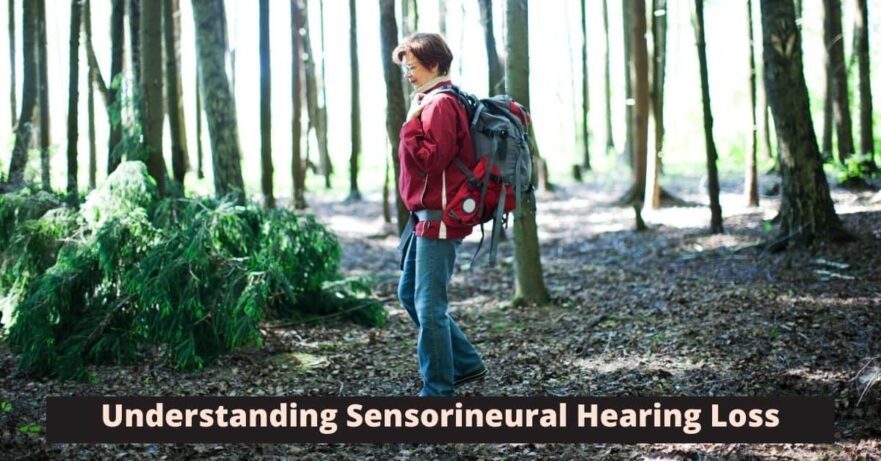Hearing loss affects approximately 48 million people in the US and 466 million people worldwide. While hearing loss is commonly thought of as primarily an issue with aging, there are many different types and causes of hearing loss. There are many different types of hearing loss but sensorineural hearing loss is the most common.
What is Sensorineural Hearing Loss?
To understand sensorineural hearing loss it is helpful to understand that there are three types of hearing loss classified by how they affect your ear. Sound waves enter the ear and are transformed by the inner ear into signals that are sent to the brain, which registers this signal as a sound. Sensorineural hearing loss is caused by damage to the tiny hair cells of the inner ear, which blocks the transmission of sound to the brain.
Conductive and Mixed Hearing Loss
Issues in the middle and outer ear caused by a blockage can lead to conductive hearing loss. This type of hearing loss can be caused by a blockage caused by infection, a foreign object, a tumor or impacted earwax. The blockage impedes sound from clearly traveling down the ear canal to the brain. The good news is that in many cases of conductive hearing loss, once the blockage is cleared up, then hearing can return to normal.
The third type of hearing loss is called mixed hearing loss. This type of hearing loss is a mixture of sensorineural hearing loss and conductive hearing loss.
Age Related Hearing Loss
There are many causes of sensorineural hearing loss but the most common cause is aging. In fact 1 in 3 adults over 65 and half of all seniors over 75 deal with sensorineural hearing loss due to aging. This is the natural breakdown of the cilia in the inner ear due to wear and tear over the years. While age related hearing loss is common it is not a normal part of aging. There are many things you can do to reduce your risk of age related hearing loss over a lifetime.
Noise Induced Hearing Loss
Many people understand the hazards of noise induced hearing loss. This is another very common cause of sensorineural hearing loss. When people work in noisy environments, or expose themselves to loud noise during recreation it can take a toll on your ear, creating serious hearing issues. It is not just the level of exposure but the amount of time one is exposed which can cause damage.
Sound is measured in decibels and any decibel level over 85 decibels can start to damage the inner ear. An exposure of 85 decibels over an eight hour work day can slowly degrade your hearing over many years, but as the decibel level rises the time it takes for hearing damage to occur becomes faster and faster. For instance, a firework at close range can register from 150- 175 decibels damaging hearing in seconds.
Other Causes of Sensorineural Hearing Loss
The inner ear is sensitive and fragile. Sensorineural hearing loss can be caused by many other things including a blow to the head, malformations in the inner ear, certain medications, certain diseases and may be congenital, meaning it is caused by inherited genetics.
It is important to understand the risks of sensorineural hearing loss because, unlike conductive hearing loss it is irreversible. Once the cilia in the inner ear are damaged science has not found a way to re-grow these hairs. While not all sensorineural hearing loss is avoidable, when you understand the risks you can take steps to try to avoid progressing this issue.
Protecting hearing should be prioritized because it can affect more than just hearing. Hearing loss is a communication issue. It affects our relationships, our sense of self, our independence and our physical health.
Treating Sensorineural Hearing Loss
While sensorineural hearing loss is permanent it can be treated rather effectively using hearing aids. Hearing aids amplify the sounds lost by damage to the cilia and send it to the inner ear. This can bypass the damage to your inner ear, allowing you to hear and interact similarly to how you did before hearing loss.
Despite the benefits of hearing aids many people put off treatment. Don’t ignore your hearing loss and let the side effects of hearing loss affect the quality of life. Set up an appointment with us today for a hearing exam!

